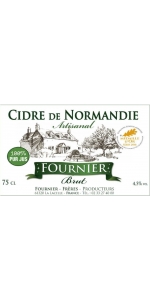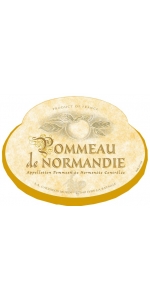Wine from Normandy

Because of the ocean climate, Normandy is not known for wine, but there have been vineyards in the past that have produced inexpensive boxed wine. There is only one small winery in Upper Normandy, which is locally renowned for producing excellent wine that goes well with the famous meals in the area. Arpents du Soleil is the name of the local winery. The climate in the northern part of Normandy is a sunny and dry microclimate. In 2007, this vineyard produced 15,000 bottles of wine. Produced in Normandy, Pommeau de Normandie is a drink made with pears and apples, two of Normandy’s specialites. Pommeau is produced by mixing apple eau-de-vie with slightly fermented apple must. This raises the alcohol level high enough so that the yeast will survive. Without yeasts, the fermentation process will stop. After fermentation, the producers are left with an apple scented juice that is quite sweet. The final alcohol content is between 16 and 18%. The process is known as mutage and is essentially the same technique that is used for making vins doux naturels. Pommeau is a mistelle. This is a French term that means partially fermented fruit fortified with alcohol.
The Fournier Family cider story started in 1943. Located in South Normandy in the middle of Dukes of Alençon province, the landscape is offering a mix between green valley and strong hills. Apples and pear trees are growing up on the hills. It is in this typical and original environment that Fournier Cider is cultivating their orchard. The fruit variety selected is giving character, authenticity and quality. The Cidre Fournier Spirit is having under control quality in their growth over: love of the land, the orchards, qualitative fruits and product well made.
perfect with savory dishes like meat and buckwheat pancake. It can be mixed with fruit liquor for cocktail.
Pommeau de Normandie a mistel type of beverage. Same process as Floc de Gascogne, Pineau des Charentes and Ratafia de Champagne.
It is made with 2/3 Unfermented sweet fruit juice (apple and pear) with 1/3 distilled alcohol at 51% ABV (Calvados).
Excellent with desert, such as French crepes (very thin pancakes).
- back
Selected Options
Regions
Categories
Pricing
Countries
Regions
Grape Types
Wineries
Organic/Free Shipping
Zuccardi Finca Piedra Infinita Altamira is made from 100 percent Malbec.
Deep red in color, the Zuccardi Finca Piedra Infinita Altamira expresses great fruity character with notes of red fruit. Grand structure and acidity on the palate with mineral with notes of wet stone and graphite and a long finish.
Review:
Quiet complexity that needs time in the glass. While it is brooding and deep, there is also a perfumed, floral and herbal aspect that makes it so attractive and unforgettable, even at such an embryonic stage. Freshly crushed blueberries, dried licorice, decadent violets, crushed stones and ash on the nose. Satin-textured tannins on the palate, which are tense, chalky and seamless. Powerful and juicy with impeccable balance. A great, cerebral and intrinsic malbec from Argentina. You can drink now, if you want, but it is a wine that you’d want to keep for the next two decades. A real charmer, especially for the wine nerds. Buy this and try!
-James Suckling 99 Points
Cabrieres Chateauneuf du Pape Rouge L'Esprit is made from 50% Grenache, 15% Syrah, 15% Mourvèdre, 10% Cinsault and 10% remaining: Muscardin, Counoise, Picpoul, Terret noir, Vaccarèse, Clairette, Bourboulenc, Roussanne, Picardan.
The vineyard is situated on the high tablelands, which are characteristic of the northern area of Châteauneuf-du-Pape. The terrain consists mainly of alpine diluvium and chalky Miocenian soil, with large flint pebbles covering the surface. These pebbles conserve the heat of the day during the night, thus avoiding too much evaporation.
85-year-old vines. Aged 12 months in French oak. Intense ruby color, with a dominant nose of black fruits (blackcurrant and blackberry) evolving into smoke and grilled notes. Robust tannins on the palate with a long finish.
Pair with choice red meat, prime rib and game, or try with strong cheeses and chocolate dessert.






